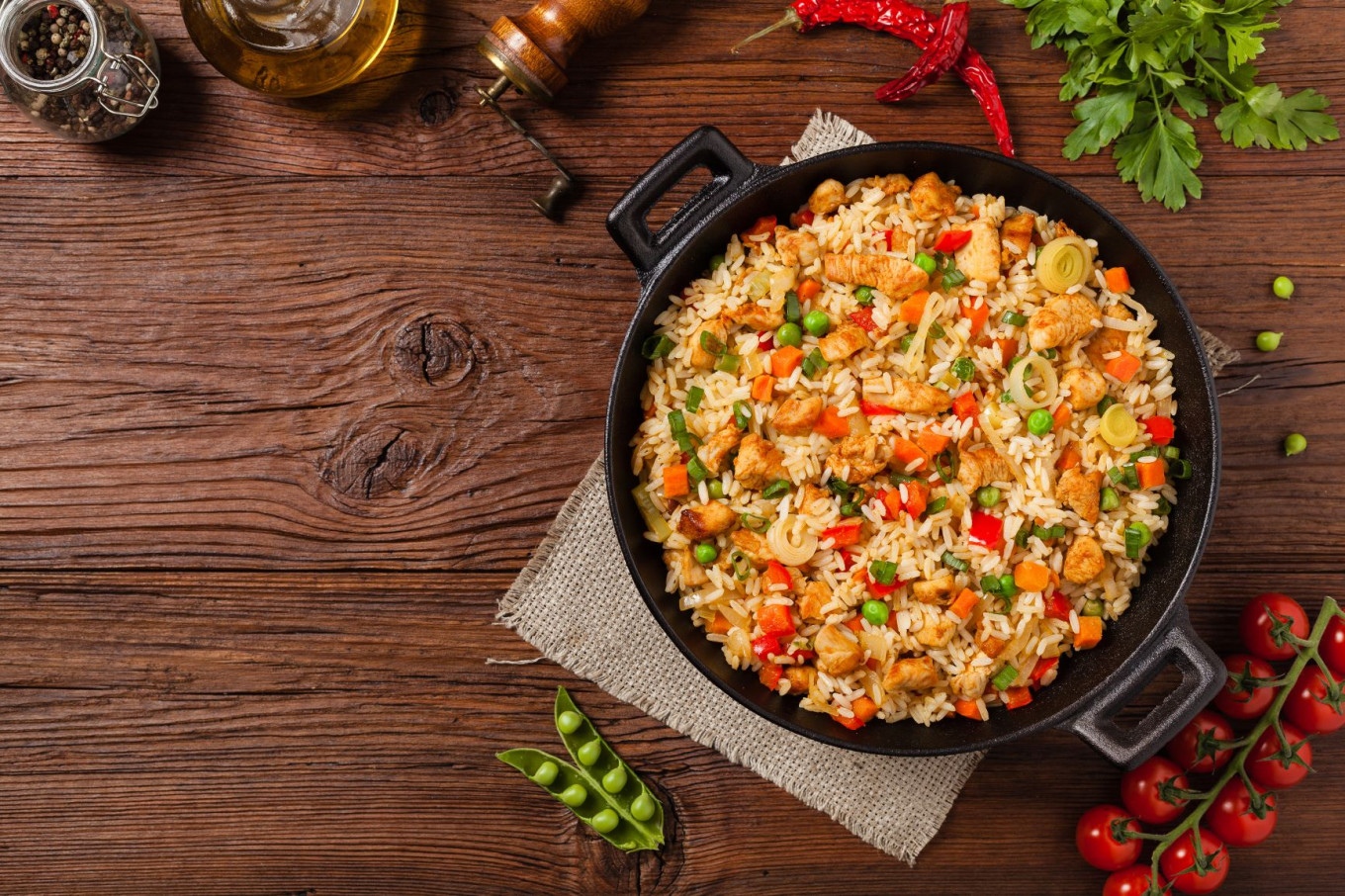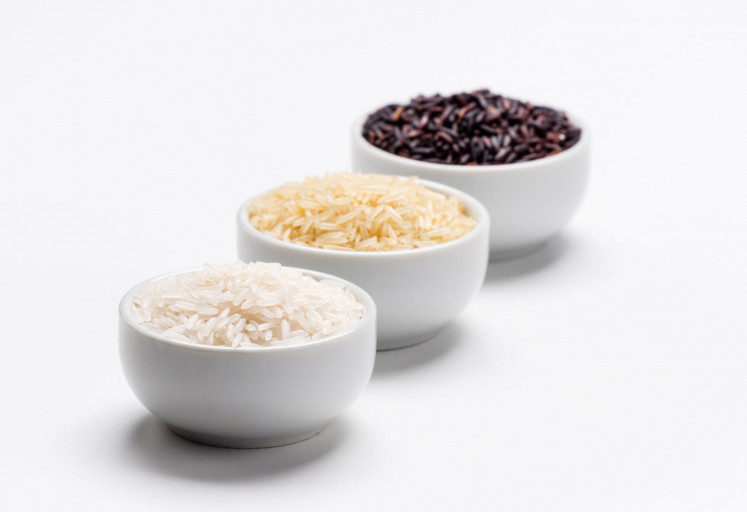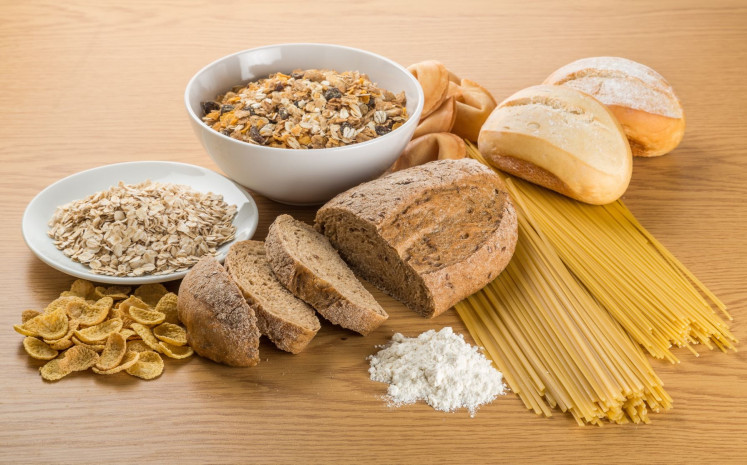Popular Reads
Top Results
Can't find what you're looking for?
View all search resultsPopular Reads
Top Results
Can't find what you're looking for?
View all search resultsBeyond rice supremacy and food diversity in Indonesia
Indonesians, or perhaps Asians in general, might be familiar with this conundrum: Is your meal really a meal if it doesn’t have any rice in it?
Change text size
Gift Premium Articles
to Anyone
Rice is perhaps the most essential food item for many Indonesian households, judging from the many dishes you can make out of it.
There is stir-fried nasi goreng, with its many spices and toppings. Maybe a hot bowl of chicken porridge is preferred to start the day, or even just plain steamed white rice to accompany whatever is on the menu.
So close is rice to our hearts that one of the first things you’d see during the start of mass unrest is panicked shoppers hoarding massive bags of rice, perhaps not unlike the Westerners who rushed out to buy toilet paper during the start of the pandemic.
Of course, the issue of food scarcity is no laughing matter, especially during a time of crisis, but are we too dependent on rice for our own good?
In Goethe-Institut’s biweekly discussion Bingkis, journalist and researcher Andi Arif highlighted the current administration’s food estate program, which he said was rather similar to the New Order’s failed Mega Rice Project.
Initiated in 1995, the Mega Rice Project was an ambitious undertaking that aimed to turn 1 million hectares of peatland in Kalimantan into rice paddies, ostensibly to achieve rice self-reliance.
All about rice: Rice is must-have food item in any Indonesian household. (Shutterstock/Louno Morose)However, the project ended in failure and was ultimately abandoned due to the massive environmental damages and adverse economic impact that resulted from it.
“I think this is like repeating the same mistakes – forcing the definition of food sufficiency in Indonesia as being based entirely on rice, even though we have a diverse source of food and food culture,” he said.
While he conceded that rice has existed as a food source since time immemorial, people also eat other forms of staple foods, like sago, which grows rather well in Kalimantan.
“Sago is interesting because it is a good fit for peatland, not needing to convert or adapt to the specific environment. This is where the mistake happens: prioritizing rice as a primary food source even though the rice plant itself can only grow in specific locations and circumstances.”
“Not every location in Indonesia is a good fit for rice plants, and this is why the country has such a diverse food culture. It’s impossible to force rice to grow in Papua, for example,” he added, noting the problems faced by the food estate program in Merauke.
Other issues may also crop up from forcing a specific plant to grow in unsuitable places. As people from Java are flown in to help grow the rice, a shift happens where the food grown cannot be produced by locals, which Andi said was a mistake that repeated time and again.
Pick your carbs: Food security in Indonesia is most often understood as self-sufficiency in rice production, despite the country’s diverse range of food sources. (Shutterstock/Billion )Researcher Gatari Surya Kusuma, a member of the Bakudapan Food Study Group, said the government’s understanding of food sustainability was then lacking, as it only covered essential foodstuffs, focusing on production numbers without paying heed to other aspects like local expertise.
“If we see Indonesia as more than Java, other islands have their own strategies for food security. But when a larger institution sees that we are facing a food crisis and will have to prepare accordingly, it is as if the local knowledge and wisdom are sidelined,” she said.
Gatari is of the opinion that the narrative on food sustainability should not be seen from the aspect of production quantity alone, but also from other supporting areas.
Andi agreed with her sentiment, saying that food diversity was key to food security and sovereignty.
“Going back to rice, it might be a good fit for regions like Java, Bali, some parts of Nusa Tenggara or Sumatra. Forcing rice to be grown in every region with their differing cultures is a huge mistake.
“President Sukarno, in the years before his removal from power, had warned of this when he officiated the IPB University: we cannot fulfill the people’s needs of food if they are only told to eat rice.”
The reason for this is geographical, as dryland and peatland are far more common than soil suitable for rice paddies.
Still, the New Order’s obsession with rice is well-documented in history, and rice itself became a component in the civil servant’s salary, either as actual bags of rice or their monetary equivalent.
“Because of this, rice is then seen as being in a higher ‘caste’, and paid civil servants regularly eat rice. This in turn influenced other regions to turn from their local food sources.
“I’ve seen how in some areas, land meant to grow sago – which is still culturally significant and consumed regularly – is turned into rice fields. This even happened on the islands of Raja Ampat, where they had already achieved food sovereignty through local food sources like sago and other tubers,” Andi said.
Perhaps most telling of the current food situation is something a government official in Halmahera, North Maluku, said to Andi.
“It’s quite sad, really, because [the official] replied that they wanted to emulate the Javanese by eating rice. I think this is a very fatal sidelining of culture – sago is the oldest food source in Indonesia, and can be said to be the ‘mother’ to our food.” (ste)













